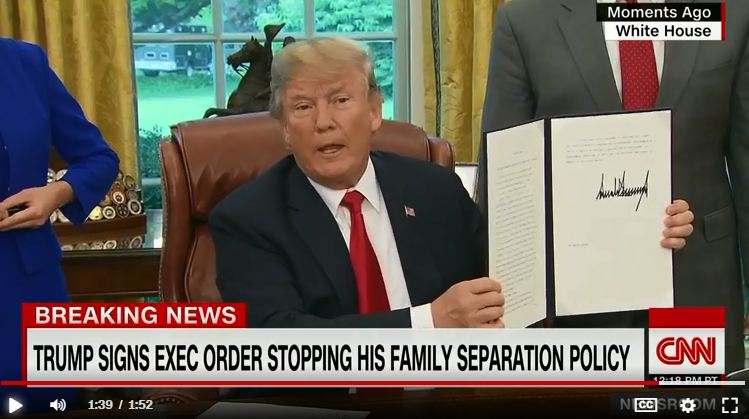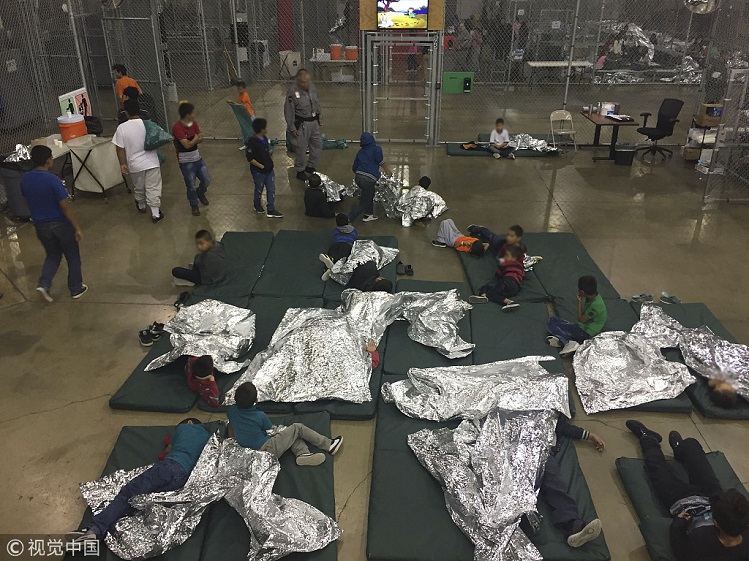22
JunOn June 20, U.S. President Trump issued a presidential executive order under pressure from public opinion. He temporarily suspended the practice of “separating the family” that is currently being implemented, which is so-called “zero tolerance” policy on the U.S.-Mexican border. Rather, it is to detain illegal immigrant parents and children in the same place .

In other words, the "give the wrong-doer a way out" of the Trump administration is only to ensure that families of illegal immigrants can temporarily reunite in detention that restricts freedom, and it is far from the directional adjustment of their immigration policy.
Trump, who is still tough, was not really comfortable in the past week. According to public figures, only from mid-April to the end of May, the U.S. government’s border law enforcement agencies forcibly detained a total of 1995 minors while detaining illegal immigrants, and these children’s photographs covered with insulating tin foil won the compassion of the world.

Faced with criticism from both inside and outside, the Trump administration has taken different attitudes completely.
Externally, and particularly in the face of criticism from the UN Human Rights Council, the Trump administration, which had originally intended to resolve the issue, simply “retreats”. Internally, the Trump administration has clearly felt a huge undercurrent of public opinion and has had to change the action.
Some polls showed that 67% of the respondents could not accept the "family separation" type of anti-illegal immigration practice, only 17% of those who can accept. Among Republican respondents, this group reached 39% and 36%.
This means that even within the Republican Party, the effect of this policy is not satisfactory, and in turn it must respond quickly to the party's basic set.
Equally important is that the immigration reform plan, which may give a six-year legal stay for young immigrants, is expected to be approved by the House of Representatives on the 21st. If Trump will not self-correct before the action of Congress, he will fall behind a passive image that is forced to correct under the pressure of Congress.
As a result, the outside world quickly saw the softening of the first lady, Melanie, in Trump’s often unsatisfactory media, and then had Trump’s executive order, which is changing the liquid but not the drugs.
Essentially, the driving force for the tightening of the Trump administration’s immigration policy is the tendency of Nativism and the concerns of conservative white groups.
The former takes it for granted that all current internal and external dilemmas in the United States are not caused by the United States itself, but are caused by exogenous factors. Immigration is one of the negative factors. This argument clearly artificially separates the multi-ethnic contributions in the development process of the United States.
The latter is repeatedly worried about who we are or who is American. Since the establishment of the immigration policy that has lasted so far since the 1960s, the population structure of the United States has irreversibly moved toward the direction of the so-called “no majority ethnic population structure”.
Even if it is not a conservative estimate, by 2045 or so, the proportion of white Anglo-Saxon whites will fall below 50%, and the consequent changes in social structure and political aspects must follow. This trend will not stop because of the tightening of immigration policy by a certain government. Because at present in the United States, the growth rate of minority populations such as Hispanics is enough to become the main driving force of this trend.
Or, since the driving forces of these two levels are either lacking basis or meaningless, what the Trump administration should do is not to use neighbors as an excuse to build a wall to lock the country, but to promote domestic and foreign policies that conform to the inevitable trend of the demographic structure of this country.
(The author is research fellow of NADS and associate professor of the School of International Studies, RUC)
(Photos from the internet)